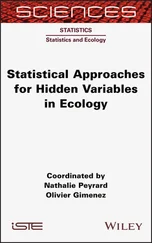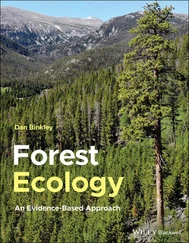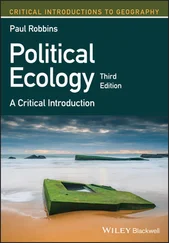1 Cover
2 List of Tables
3 List of Figures
4 List of Boxes
5 List of Case Studies
6 List of Plates
7 Preface to the Second Edition Preface to the Second Edition Ecology is a rapidly evolving subject, not least in the techniques available to the field ecologist. Since the publication of our first edition of this project guide, advances have been made in several areas, most notably those that take advantage of modern technological developments. Whilst field ecologists have always sought to invent new methods and improve existing ones for monitoring plants and animals, new mobile technologies increasingly enable the tools for identification and verification of organisms to be literally in a researcher's back pocket. Similar advances in mobile phone apps have facilitated environmental monitoring, which has the potential to reduce the amount of equipment the researcher has to carry and perhaps go some way to providing standardisation of monitoring tools. There has been continued refinement of previously laboratory‐based techniques that provide access to information more cheaply and immediately in the field where once we would have had to take samples back to sophisticated laboratories for analysis. Further developments in other technologies have opened up new and exciting opportunities to survey our environment (in the case of drone technology, the sky is literally the limit!). As these developments bed in, it is appropriate to review the tools available to field researchers. We have extended this second edition to cover a wider range of methods, with a special focus on more recent developments, emphasising the direction of travel of modern field ecology. Following positive feedback from many students and colleagues, we have increased the number of case studies, which demonstrate the realities of working in the field. Developments have also been made recently in the analysis of ecological data, and this is reflected in a broader coverage of some of the more accessible techniques and available software. Since communication of scientific results is highly relevant in today's confusing mix of fact and opinion, we have also expanded our coverage of presentation skills to include publishing in scientific journals and presentation at conferences. We have been privileged to have had expert advice and constructive criticism from a large number of experts who, in addition to the input to the first edition of this book, have reviewed the plans and implementation of the second edition, provided case studies and photographs, read and commented on individual sections, and generally encouraged us in our endeavours.
8 Preface to the First Edition
9 Acknowledgements
10 About the Companion Website
11 1 Preparation Choosing a topic for study Ecological research questions Creating aims, objectives, and hypotheses Reviewing the literature Practical considerations Statistical considerations in project design Choosing sampling methods Summary
12 2 Monitoring Site Characteristics Site selection Site characterisation
13 3 Sampling Plants and Other Static Organisms Sampling for static organisms Quadrat sampling Pin‐frames Transects Plotless sampling Distribution of static organisms Forestry techniques
14 4 Sampling Mobile Organisms General issues Invertebrates Capturing aquatic invertebrates Capturing soil‐living invertebrates Capturing ground‐active invertebrates Capturing invertebrates from plants Capturing airborne invertebrates Fish Amphibians Reptiles Birds Mammals
15 5 Analysing and Interpreting Information Keys to tests Exploring and describing data Testing hypotheses using basic statistical tests and simple general linear models More advanced general linear models for predictive analysis Generalized linear models Statistical methods to examine pattern and structure in communities: classification, indicator species, and ordination
16 6 Presenting Information Written reports Writing style Computer files Specific guidance for writing for a journal Specific guidance for preparing a poster Specific guidance for preparing an oral presentation Summary
17 Appendix 1Glossary of Statistical Terms
18 References
19 Index
20 End User License Agreement
1 Chapter 1 Table 1.1 Example timescales for a short research project. Table 1.2 Random numbers. Coordinates can be extracted simply by taking pairs... Table 1.3 Common statistical tests. Note that in each case, there are possibl...
2 Chapter 2 Table 2.1 Common factors influencing living organisms.Table 2.2 Types of bioindicators for monitoring environmental conditions.Table 2.3 Range of taxa used as bioindicators.Table 2.4 Major taxonomic groups.Table 2.5 Major divisions of the Raunkiær plant life‐form system.
3 Chapter 3Table 3.1 DAFOR, Braun–Blanquet, and Domin scales for vegetation cover.Table 3.2 Abundance (ESACFORN) scales for littoral species.Table 3.3 Recommended quadrat sizes for various organisms.
4 Chapter 4Table 4.1 Some considerations in the choice of radio‐tracking equipment.Table 4.2 Summary of killing and preservation techniques for commonly studied...Table 4.3 Factors to consider when using pitfall traps.Table 4.4 Examples of baits and target insect groups.Table 4.5 Factors to consider when choosing light traps to collect moths.Table 4.6 Summary of different types of net.Table 4.7 Example of timed species counts. Using 12 surveys, each of 1 hour (...Table 4.8 Comparison of bat detector systems.
5 Chapter 5Table 5.1 Abundance of invertebrates in ponds. Percentages in parentheses may...Table 5.2 Summary of commonly used methods of population estimation based on ...Table 5.3 Common diversity and evenness indices.Table 5.4 Commonly used similarity measures.Table 5.5 Statistics that should be reported for difference tests. These are ...Table 5.6 Statistics that should be reported for relationship tests. These ar...Table 5.7 Statistics that should be recorded for tests used to examine associ...Table 5.8 Using dummy variables. Example of how two dummy variables (large/no...Table 5.9 A spider indicator species analysis. The respective overall indicat...Table 5.10 Types of stress measure for computing MDS solutions.
6 Chapter 6Table 6.1 Mean number of individuals a)of invertebrate orders found in pollut...Table 6.2 Uses of different types of graphs.Table 6.3 Examples of words used unnecessarily when qualifying terms.Table 6.4 SI units of measurement. To standardise the units in which measurem...Table 6.5 Conventions for the use of abbreviations.Table 6.6 Examples of Latin and foreign words and their emphasis.
1 Chapter 1 Figure 1.1 Flowchart of the planning considerations for research projects. Figure 1.2 Example timescales for a medium‐term research project. Note... Figure 1.3 Example of a section of a data recording sheet for an investigati... Figure 1.4 Examples of sampling designs. (a) Random sampling; (b) systematic... Figure 1.5 Experimental layouts for five different treatments. (a) Clustered... Figure 1.6 Data set approximating to a normal distribution.
2 Chapter 2 Figure 2.1 Phase 1 habitat map. In the UK, Phase 1 habitat surveys involve ma... Figure 2.2 Portable weather station. Many automated weather stations will au... Figure 2.3 Maximum/minimum thermometer. As the temperature rises, the alcoho... Figure 2.4 Types of thermometers. Old style soil thermometers like the one s... Figure 2.5 Whirling hygrometer. This is also called a psychrometer and consi... Figure 2.6
Читать дальше












